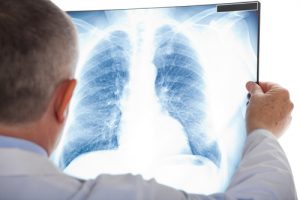For pulmonary fibrosis patients, lung transplant is often the best choice for extending life and improving quality of life. Because PF is a progressive disease with no current cure, the lungs eventually become too scarred to function. A lung transplant can give PF patients a second chance. But the procedure is not without risks and is not a first-line option.
Transplant statistics show that PF is currently the leading cause for lung transplants. Data from 2013 revealed that nearly half of all donated lungs went to PF patients. Thanks to improvements in transplant techniques, it is now possible for lung transplants to be successful even for some candidates older than 65.
Lung transplant for pulmonary fibrosis patients has become increasingly prevalent because of the disease’s poor prognosis, and the promising survival rates of people who have received lung transplants.
“Idiopathic pulmonary fibrosis is an incurable disease with a dismal prognosis. The only treatment of proven benefit is LTx [lung transplant],” explained authors of the study “Lung transplant in idiopathic pulmonary fibrosis,” from the Division of Cardiac Surgery at Johns Hopkins University.
“Since the introduction of the Lung Allocation Score, IPF has become the most common indication for LTx in the United States. These patients have a limited life expectancy and benefit from early referral for transplant. Although controversial, the most recent data suggest that bilateral LTx is superior to single LTx in the population of patients with IPF. For this population, LTx increases the length and quality of their lives,” the authors wrote.
Specialists usually exhaust other treatment options before suggesting lung transplantation. Oxygen therapy, pulmonary rehabilitation, lifestyle changes, and prescription medicines for controlling the progression of the disease (such as Esbriet and Ofev) are used first to slow the decline of lung function. When pulmonary fibrosis progresses to the point that lungs can no longer provide ample oxygen into the bloodstream, transplant may be advised.
Not all PF patients are eligible for a lung transplant. The Pulmonary Fibrosis Foundation lists the following criteria for lung transplant:
- Be in good physical condition besides lung function
- be at ideal body weight
- have no other life-threatening illnesses
- demonstrate absolute compliance with prescribed medicines and medical recommendations
- have a realistic understanding of the emotional implications of a lung transplant
- have a very supportive social support system in place
- have participated in a pulmonary rehabilitation program
- expect to participate in educational seminars and a support group
- consider the financial implications of the procedure.
If a patient generally meet these criteria, they can be placed on a transplant waiting list.
 Lung transplant procedure for PF patients
Lung transplant procedure for PF patients
When a compatible donor becomes available, the patient is contacted then prepped for surgery very quickly while the donated lungs are preserved and transported. After examination of the donor’s lungs and confirmation of suitability, the surgery can begin — even before the organs arrive at the hospital. Depending on several factors, the decision to perform a single or double lung transplant is made prior to the operation.
Patients are kept unconscious under general anesthesia during the entire procedure. The surgery begins with a large incision on one side of the chest for a single lung transplant. In the case of double lung transplant, the incision can be made across the entire width of the chest or on either side. Surgeons then remove the patient’s scarred lung or lungs and attach the donor’s lung or lungs. Some patients will undergo a cardiopulmonary bypass during the surgery to pump blood and provide oxygen normally done by the heart and lungs. The surgery usually takes six hours.
Recovery and life after a lung transplant
Following surgery, the patient’s medical team will monitor post-op vitals and administer anti-rejection medications and immunosuppressants. Each patient reacts and adjust to new lungs and medications differently. Before discharge, the physicians and patient will confirm a medication schedule, follow-up appointments, diet and exercise restrictions, pain management, and safety preparations for the patient’s recovery at home. Because lung transplant is a major surgery, patients need time to heal while dealing with the procedure’s two main risks — rejection and infection.
Signs that may indicate rejection include fever and flu-like symptoms, chest congestion, coughing, shortness of breath, new pain around the lung, generally feeling unwell. Patients are prescribed medication to avoid rejection, but the medication weakens the immune system and makes patients more susceptible to infections. It is important that patients wash their hands often, take care of their teeth and gums, protect their skin from scratches and sores, and stay away from crowds and people who have colds or the flu.
The first year after transplant is considered critical because risk for complications is high. According to the Scientific Registry of Transplant Recipients, 98.4% of patients survive the first year, 74.8% of patients survive three years, and 61.2% survive five years.
The study “Lung transplantation for idiopathic pulmonary fibrosis,” by researchers from the Department of Thoracic and Cardiovascular Surgery at Cleveland Clinic, reported that “survival after lung transplantation for IPF is worse than after other indications for transplantation when multiple clinical variables are accounted for. Survival may be improved by double lung transplant.”
Pulmonary Fibrosis News is strictly a news and information website about the disease. It does not provide medical advice, diagnosis or treatment. This content is not intended to be a substitute for professional medical advice, diagnosis, or treatment. Always seek the advice of your physician or other qualified health provider with any questions you may have regarding a medical condition. Never disregard professional medical advice or delay in seeking it because of something you have read on this website.
- https://pulmonaryfibrosis.org/life-with-pf/pulmonary-fibrosis-treatment-options
- https://my.clevelandclinic.org/health/treatments_and_procedures/hic-lung-transplant-surgery

